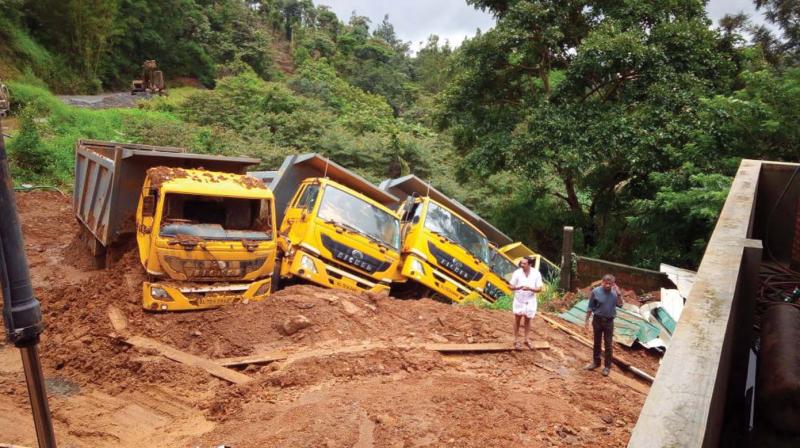Kalpetta: Deforestation led to landslides
Massive construction activity reason, too.

Kalpetta: Massive felling of trees is a major reason that triggered widespread landslides, lateral movement and piping across the Western Ghats in general and Wayanad district in particular, according to experts.
Tirunelli, Thavinjal, Edavaka and Vythiri panchayats in Wayanad saw land subsidence-related crevices damaging houses - 12 cases in Tirunelli alone.
Soil conservation experts and environmentalists say the massive construction activity coupled with destruction to tree growth contributed to the phenomena.
District soil conservation officer P.U. Das said as the green cover that protects the soil from the heat and harshness of rain, the tree root network protects soil from erosion, ensure stability and check wash-off during heavy rains.
When the trees cut, the roots gradually decay allowing water to seep in creating holes within the earth, augmenting the phenomenon called piping.
During the monsoon, Wayanad received the highest rainfall in recent history - 5,000 mmm within 80 days aggravating the situation. “The average rainfall during the period was around 3,800 mm,” he said.
The mountain ranges of Brahmagiri and Periya have more sensitive terrain.
Many say the hillocks and terrains with sufficient green cover survived the torrential downpour, proving the strength of trees. Many encroachers either diverted or destroyed the origin of streams, which the nature corrected.
The study conducted by the department of soil conservation in Wayanad revealed that most of the primary and secondary streams in hillocks vanished through human intervention during the last 50 years were restored during the torrential rains.
Streams started trickling down from roads, floors of houses and even hilltops.
District collector A.R. Ajayakumar told DC that said there would be more rules and regulations to check massive environmental destruction.
“More focus would be given on land utilisation including construction and renovation of buildings,” he said.

